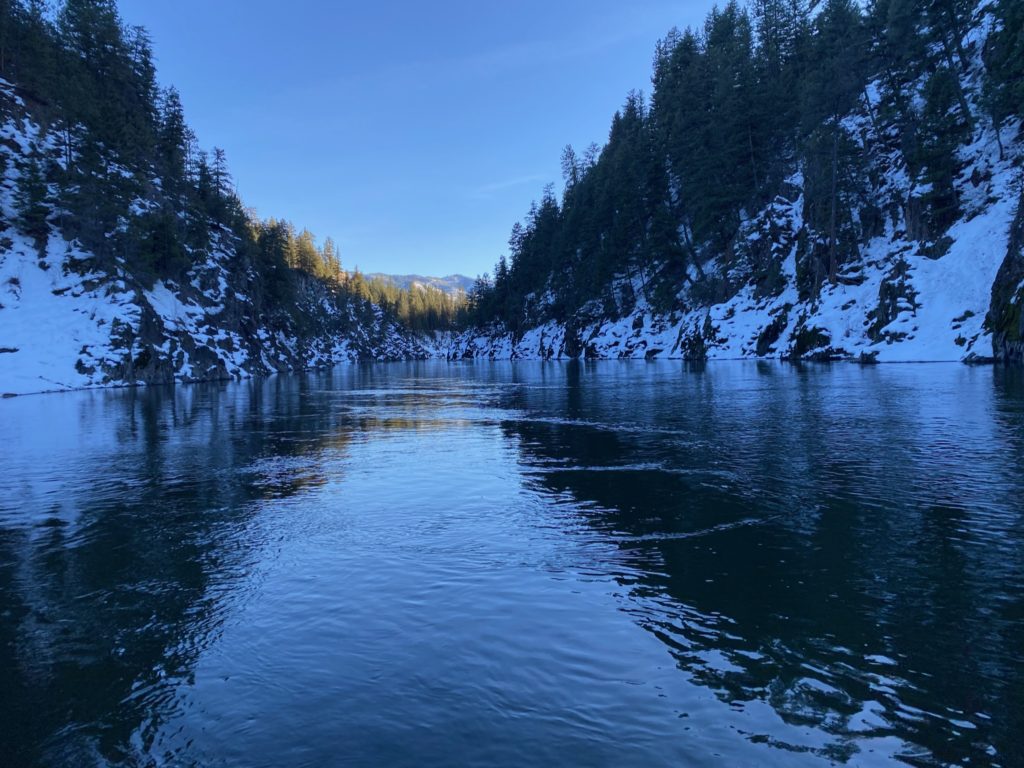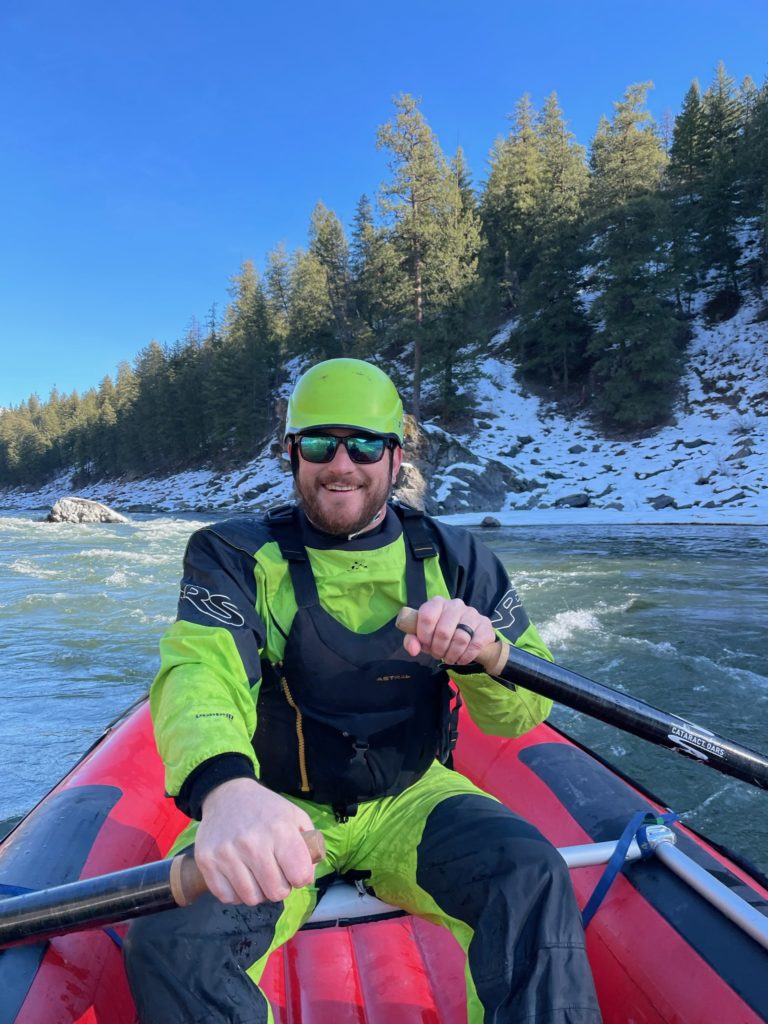Winter Boating Advice
Spring flows and Summer floats are right around the corner. If you are a boater, you know this, and are likely getting excited thinking and dreaming. What pieces of gear you may need to upgrade or repair, what lines or rivers you may want to explore, or how excited you are about your first Middle Fork Permit. But this write up is not meant to go into the many details of the Spring boating season or your first multi day trip. Rather, it is meant to explore an intermediary, a temporary solution that many boaters are starting to need right about now.
Winter boating, to me, is that solution. It is somewhat of a different animal in some of the best ways, and in others, some of the scariest. Here are five tips to make your entry into winter boating a bit more comfortable, safe, and fun.

Winter boating can be so peaceful and beautiful
- Perhaps this is the season to avoid the big stuff.
Getting on the water in the winter can be a great time to shake the rust off and just enjoy quiet time on your favorite sections of water (many of which normally have a constant cacophony of voices ricocheting down the sections like the Alberton Gorge). Treat the cold water and weather for what it is. Boat for the joy of it, knowing that this may not necessarily be the time to push the big, consequential lines that have a high chance of sending you swimming. Be extra cautious of hypothermia, and double down on the idea of dressing for the swim, not the weather.
- Along those lines- dress, layer, and gear yourself appropriately.
Winter boating is so peaceful and tends to reignite that love of whitewater that may have been dormant while chasing powder turns and hockey pucks. But it should be viewed as more hazardous, both for yourself, and for any potential rescuers. My general rule of thumb is to dress so that I can stay in the for a minimum of 30 minutes completely comfortably. Dry suits (here for women’s suits) are not just a comfort for boating in the winter, but a mandatory piece of gear for cold water boating. There are many myths about air and water temperature, but the bottom line is that if it is cold water, be prepared for immersion and layer appropriately. My personal cold water layering list: Under my dry suit I wear 2-3 thick fleece layers, 1 lighter moisture wicking layer, and double, sometimes triple wool socks. I use NRS HydroSkin Socks on the outside of my dry suit to protect the booties and add extra warmth. All this insulation for my feet necessitates having a winter set of wet shoes just for my dry suit. In my dry bag I bring along an additional thick layer, a puffy jacket, ski gloves, NRS Maverick waterproof Neoprene gloves, sunscreen, extra wool socks, a warm beanie, a few high calorie snack bars, and a rain shell. Additional Tip: the rain shell is great to eliminate evaporative cooling. Wear it through the whitewater sections and remove it when the sun hits you, or when you get done with the splashes for the day.
- Re-think your necessaries.
Perhaps you have a winter helmet that has ear protection and more insulation. Perhaps you have a PFD you prefer because it has fleece lined hand warming pockets. Whatever your gear and preferences may look like, this is the time of year to double check and re-think whether something is important to have with you on the water. This is the time of year to take extra time to evaluate why something may or may not be needed in your kit. Extra fleece hats and heavily insulated ski gloves may not be in every normal boating kit, but these are definitely nice, perhaps even necessary, for boating in the winter. Leave the sunscreen in your winter kit, remembering that you can still get sunburnt from snow/water glare with no protection. Fully waterproof gloves are great as well, but be warned- once your neoprene gloves are wet, they will likely remain wet for the rest of the day. Keep them in your dry bag for when you get chilly, unless you plan on wearing them all day.
- Food. All of the food.
Having something to eat can make all of the difference between a lovely day and a harrowing brush with hanger. Your caloric intake will need to be higher as your body is working to keep you warm, so bring some extra snacks. I love bringing a 64 oz Hydro Flask of hot tea as well, as it’s a glorious treat on those shady afternoons when you are starting to get chilled. Bring along warm food if possible, but warm or cold extra snacks will help keep you warm and comfortable, as well as stay safe. Proper caloric intake enables you to think clearly, and to deal more effectively with stressful situations and emergencies.
- Safety is still number 1
This will seem like a reiteration, and to be fair, it is. But safety of you and your party is the number one thing to pay attention to. If the weather seems like it may cause problems, perhaps wait until the next sunny day. If the flows are spiking above your comfort level, winter is not the time to push that comfort level. Have an evacuation plan and a hypo kit, especially if you are in a remote setting. Have extra gear for your friends and yourself. After all, you would rather have an extra set of gloves than deal with a horrific upstream wind that results in frostbite without them.
Winter Boating can and should be fun. There are many things to note about staying safe, comfortable, and therefore happy on winter boating trips. These are just a few, and this is in no way an exhaustive effort to cover all safety tips. Hopefully though, this will help get you started, or serve as a reminder should you already be a winter boating fanatic.

Ian staying warm, and thus very happy, on a recent lap.
We just got out to get some winter laps in ourselves, and we sure are getting excited for the upcoming season around here. Visit www.zootownsurfers.com to get your booking secured for the season.
Stay safe and warm out there, and I hope to see you on the water soon!


